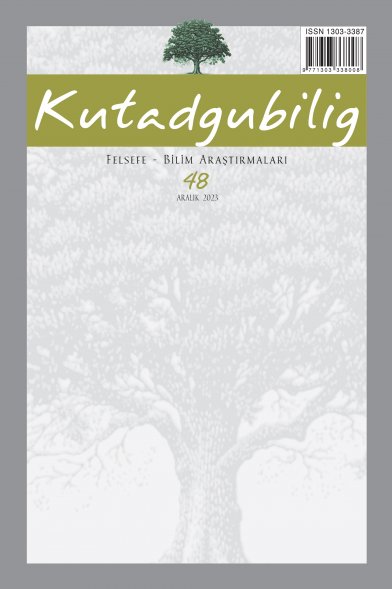17. yüzyıl İngilteresi'nde Türkçe basım ve yayıncılık
Turkish printing and publishing in England in the 17 th century
___
Arberry, A.J. The Cambridge school of Arabic. Cambridge, 1948.Boyle, Robert. The Correspondence. Ed. M. Hunter, A. Clericuzio & L.M. Prineipe. London 2001. 6 vols.
(Daley, Michael.) The Turkish legacy. Oxford: Bodleian Library, 1988.
Darlow, T.H. & Moule, H.F. Historical catalogue of the printed editions of Holy Scripture in the library of the British and Foreign Bible Society. Vol. II. London, 1911,
Duverdier, Gerald. Savary de Breves et Ibrahim Müteferrika: deux drogmans culturels â Toriğine de l'imprmerie turque. Bulletin du Bibliophile, 1987 iii.
Forster, H. The rise and fall of the Cambridge muses (1603-1763). Transactions of the Cambridge Bibliographical Society, 8 ii (1982), pp.141-172.
Gallop, Annabel Teh. A 17th-century Malay miscellany: two new discoveries in the British Library. Tradisipenulisan manuskrip Melayu. Kuala Lumpur 1997, pp.71-86.
Gerçek, Selim Nüzhet. Türk matbaacılığı. 1, Müteferrika matbaası, istanbul 1939.
Hamilton, Alastair. Seaman, William (1606/7-1680). Oxford Dictionary of National Biography. Oxford 2004 [http://www.oxforddnb.com/view/article/24986, accessed 27 Oct 2005]
Hamilton, Alastair. Seaman, Alastair & Richard, Francis. Andre Du Ryer and Oriental studies in seventeenth century France. Oxford 2004.
Hart, H. Notes on a century of typography at the University Press Oxford 1693-1794. Oxford 1900, rp. 1970.
Lane, John A. Arent Corsz Hogenacker (ca. 1579-1636): an account of his typefoundry and a note on his types. Quaerendo, 25 (1995), pp. 83-113 & 163-191.
McGrath, C.I. Wyche, Sir Cyril (c. 1632-1707). Oxford Dictionary of National Biography. Oxford 2004 [http://www.oxforddnb.com/view/article/24986, accessed 27 Oct 2005]
Madan, F. Oxford books: a bibliography of printed works relating to the University and City of Oxford or printed or published there. Vol. 2. Oxford literature 1450-1640, and 1641-1650. Oxford 1912.
Madan, F. Oxford books: a bibliography of printed works relating to the University and City of Oxford or printed or published there. Vol. 3. Oxford literature 1651-1680. Oxford 1931.
Marshall, P.J. Hyde, Thomas (1636-1703). Oxford Dictionary of National Biography. Oxford 2004. [http://www.oxforddnb.com/view/article/24986, accessed 27 Oct 2005]
Morison, S. John Fell, the University Press and the Fell' types: the punches and matrices designed for printing in the Greek, Latin, English, and Oriental languages bequeathed in 1686 to the University of Oxford by John Fell, D.D., Delegate of the Press, Dean of Christ Church, Vice-Chancellor of the University and Bishop of Oxford. Oxford 1967.
Neumann, Christoph K. Buch- und Zeitungsdruck auf Tiirkisch, 18. bis 20. Jahrhundert. Book and newspaper printing in Turkish 18th-20th centuries. Middle Eastern languages and the print revolution: a cross-cultural encounter = Sprachen des Nahen Ostens und die Druckrevolution: eine interkulturelle Begegnung. Ed.= Hrsg. E. Hanebutt-Benz, D. Glass, G. Roper / Gutenberg-Museum Mainz, Internationale Gutenberg-Gesellschaft. Westhofen 2002, pp.227-248 & 534-537.
Pearson, John B. A biographical sketch of the chaplains to the Levant Company. Cambridge 1883.
Roper, Geoffrey. Arabic printing and publishing in England before 1820. British Society for Middle Eastern Studies Bulletin, 12 (1985), pp.12-32.
Roper, Geoffrey.Persian printing and publishing in England in the 17th century. Iran and Iranian studies. Ed. Kambiz Eslami. Princeton 1998, pp. 316-328.
Roper, Geoffrey. Early Arabic printing in Europe. Arabischer Frühdruck in Europa. Middle Eastern languages and the print revolution: a cross-cultural encounter - Sprachen des Nahen Ostens und die Druckr evolution: eine interkulturelle Begegnung. Ed.= Hrsg. E. Hanebutt-Benz, D. Glass, G. Roper /Gutenberg-Museum Mainz, Internationale Gutenberg-Gesellschaft. Westhofen 2002, pp. 129-150 & 526-529.
Siemieniec-Golas, Ewa. William Seaman and his Grammatica Linguage [sic] Turcicae (1670). Folia Orientalia, 29 (1992-1993), pp.231-236.
Smitskamp, Rijk. Philologia orientalis: a description of books illustrating the study and printing of Oriental languages in 16th- and 17th-century Europe. Leiden 1992.
Toomer, G.J. Eastern wisedome and learning: the study of Arabic in seventeenth-century England. Oxford 1996.55
- ISSN: 1303-3387
- Yayın Aralığı: 2
- Başlangıç: 2002
- Yayıncı: Dergah Yayınları A.Ş.
İletişim, sistem ve felsefe: İletişimsel sistem felsefesine giriş
Din Eğitiminde kuram ve eylem ilişkisi
Macit Gökberk felsefesinin ana çizgileri
Mehmet Emin Erişigil: Bergsonculuktan pragmatizme bir darulfünun hocası
Hilmi Ziya Ülken'in bilinmeyen iki öz geçmiş metni
17. yüzyıl İngilteresi'nde Türkçe basım ve yayıncılık
Bedia Akarsu'nun felsefe anlayışı
